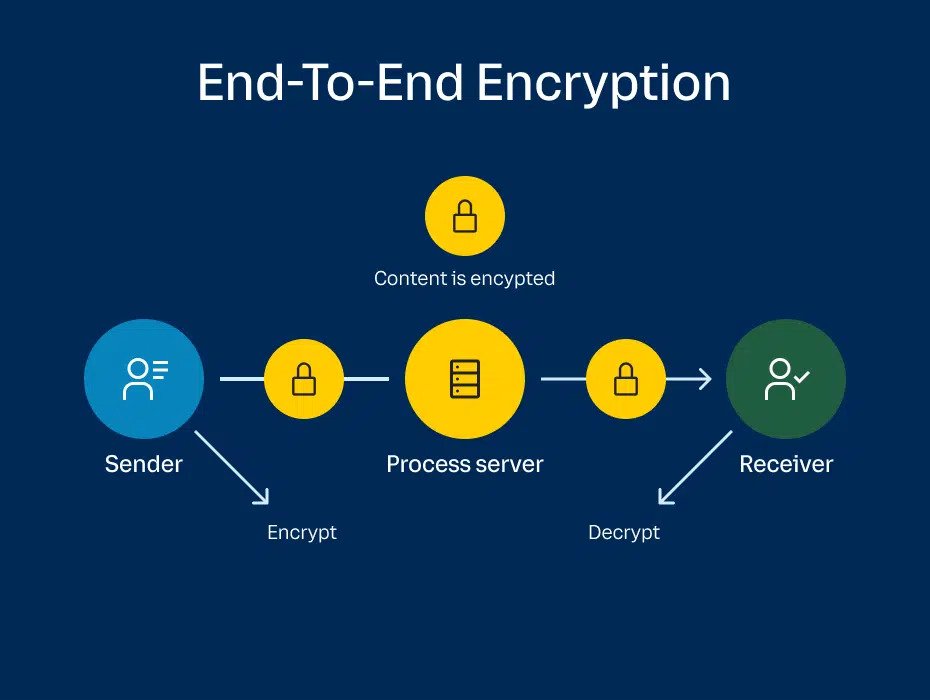In an era besieged by incessant digital vulnerabilities, the question of whether end-to-end encryption (E2EE) remains sufficient in 2025 is not merely a technical inquiry but a profound philosophical musing on the nature of privacy itself. Picture a fort standing resolutely amidst a turbulent sea, its walls seemingly impenetrable, yet its foundation vulnerable to the relentless erosion of time and tide. This metaphor encapsulates the essence of E2EE as both a bastion of security and a potential victim of evolving threats.
End-to-end encryption functions as a protective shroud, cloaking messages and data in an impenetrable layer of cryptography from sender to recipient. The purported elegance of E2EE communicates a profound reassurance; only the intended recipients can decode the encrypted message. Yet, as we gaze into the horizon of 2025, we must consider whether this silver lining can withstand the gale-force winds of technological advancement and malicious intent.
To understand the landscape of digital privacy in 2025, we must familiarize ourselves with the unprecedented advancements in computational power and AI technologies that are projected to flourish over the next few years. As quantum computing looms in the not-so-distant future, its potential to dismantle traditional encryption methods poses grave concerns. Current encryption algorithms that hinge upon mathematical complexity for their security may soon find themselves akin to the fragile walls of our metaphorical fort, crumbling under the weight of quantum algorithms designed to solve problems that stand insurmountable for classical computers. The advent of quantum supremacy could render E2EE obsolete if we are unprepared.
Furthermore, while E2EE safeguards the communication channel itself, it cannot inherently protect against vulnerabilities in other crucial areas. The software that houses this encryption may unwittingly expose users to security risks. As cybercriminals evolve, their methods become increasingly sophisticated—manipulating social engineering exploits, infiltrating endpoints, or proffering malicious applications disguised as benign tools. The human element in this equation remains the most porous barrier. No amount of sophisticated encryption can obfuscate a user’s personal information if they are coerced into divulging it. Thus, social engineering schemes can circumvent E2EE’s protections, leading to an erosion of trust.
As we consider the intertwined relationship between E2EE and user awareness, the role of education emerges as a central theme. Users must understand the confines and capabilities of the technologies they employ. Only with this knowledge can they effectively shield themselves against external threats. A comprehensive understanding of digital literacy can empower individuals to become the architects of their own security. Like the vigilant sentinels guarding the fort’s gates, informed users must recognize the broader landscape beyond mere encryption—an intricate tapestry woven from behavioral habits, digital footprints, and the wisps of metadata.
The context of regulation further complicates the dialogue surrounding E2EE. Governments worldwide are navigating the delicate balance between national security and individual privacy. Policies mandating backdoors for law enforcement are becoming increasingly prevalent. Such backdoors could compromise E2EE, rendering the protective mechanism a flawed facade. As society grapples with the ambiguities of safe and perilous communication, it confronts ethical dilemmas that challenge the very foundation of privacy rights. Can a compromise be enacted without forsaking the integrity of E2EE? This remains an existential question for the digital age.
Moreover, the evolution of surveillance technologies cannot be overlooked. As mass surveillance becomes increasingly sophisticated, E2EE serves only as one layer among many in guarding against unauthorized scrutiny. Governments, corporations, and nefarious entities are developing capabilities that can bypass encryption through means that don’t directly contravene E2EE, such as advanced monitoring systems. The rise of machine learning and data analytics enables entities to scrutinize behavior patterns and derive insights that threaten individual autonomy and privacy. In this brave new world, questions arise: Can E2EE protect users from pervasive surveillance in its various forms? Does its presence merely perpetuate a false sense of security?
In contemplating the future of E2EE as we approach 2025, it becomes paramount to imagine not a singular solution but a robust framework for privacy—one that intertwines technology, education, and ethical considerations. Multilayered approaches, incorporating biometric security, decentralized systems, and personal data ownership, may emerge as key components in the ongoing crusade against information vulnerabilities. E2EE must evolve—not only to incorporate resistance against brute force attacks and evolving technologies but also to address the multifaceted threats that permeate the digital atmosphere.
The horizon of 2025 beckons; it is a landscape rich with potential yet fraught with challenges. While E2EE serves as a vital linchpin in the quest for digital privacy, it is not a panacea. As our awareness multiplies and technologies advance, we must cultivate a more profound understanding of the intricate relationship between encryption, user responsibility, and the ramifications of surveillance. Just as the fort’s design must continuously adapt to the challenges of nature, so too must our approaches to privacy and data security evolve in an age where the essence of personal freedom hangs in balance. The path ahead is uncertain, yet it is compellingly ours to forge.








Leave a Comment